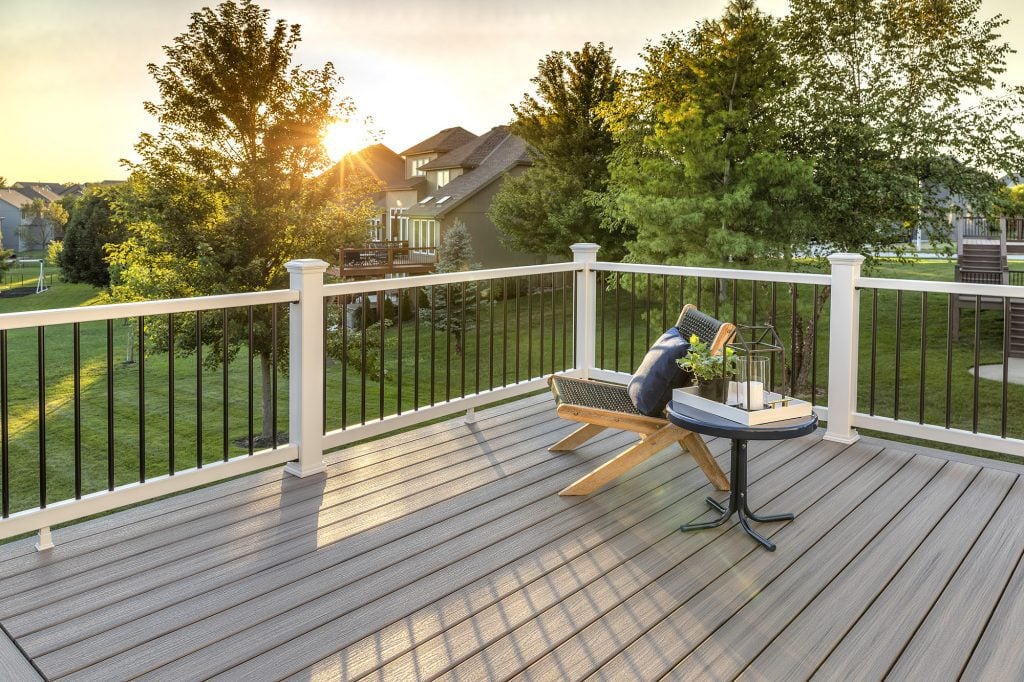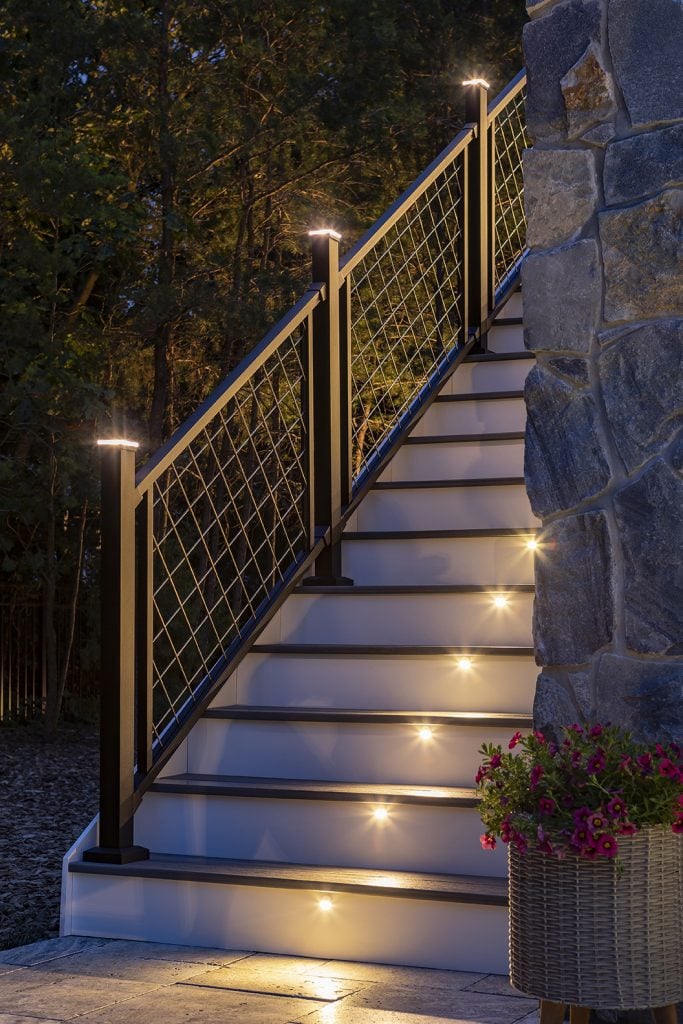When it comes to building a deck, one of the critical decisions you’ll face is choosing the right material for your railings. Pressure treated wood is a popular choice for its durability and cost-effectiveness, but it’s not the only option out there.
In this post, we’ll explore the pros and cons of using pressure-treated wood for deck railings and compare it with alternative materials like composite and aluminum.
Pressure Treated Wood Railings
Pressure treated wood is a common choice for deck railings and other outdoor structures because it’s treated with chemicals that help prevent decay, insect infestation, and weather damage.
Pros:
- Cost-Effective: Pressure treated wood is generally more affordable than composite or aluminum options.
- Durability: The chemical treatment helps it resist rot, and weather-related damage.
- Customizable: Wood railings can be easily cut and shaped to fit your deck’s design and can be painted or stained to match your aesthetic.
Cons:
- Maintenance: Requires regular maintenance, including staining or painting every few years to maintain its appearance and longevity. The maintenance on the railing is the most tedious part since you must do all exposed sides of the spindles, top rail, bottom rail and handrail.
- Chemical Treatment: The newer chemicals used in the treatment process are more environmentally friendly than the old treatments that contained arsenic but many home owners are finding the newer pressure treated lumber does not last as long. Many are seeing rot in as little as 10 – 15 years.
- Splinters and Warping: Over time, pressure treated wood can splinter and warp, which may require additional maintenance or replacement.
Composite Deck Railing Kits
Composite railing kits are made from a blend of wood fibers and plastic. They offer a modern look and are designed to mimic the appearance of natural wood.

Pros:
- Low Maintenance: Composite railings require little to no maintenance, as they don’t need to be stained or painted.
- Durability: Resistant to rot, insects, and weathering, composite railings can last longer than wood without showing signs of wear.
- Aesthetics: Available in a variety of colors and styles, composite railings can provide a consistent and polished look for your deck.
- Easy Install: Composite railing comes in kits that are easy to assemble and install. This makes installation much faster than installing a custom made wood railing.
Cons:
- Cost: Composite railing kits are typically more expensive upfront than pressure-treated wood.
- Limited Customization: While available in various styles, composite railings may not offer the same level of customization as wood.
Shop our Composite Deck Railing Kits Online
Aluminum Deck Railing Kits
Aluminum railings are a lightweight and durable option that has gained popularity in recent years for their sleek appearance and low maintenance requirements.

Pros:
- Durability: Aluminum is resistant to rust, corrosion, and weathering, making it an excellent choice for long-lasting railings.
- Low Maintenance: Unlike wood, aluminum railings don’t require painting or staining and are easy to clean.
- Aesthetic Variety: Available in various colors and styles, aluminum railings can suit different design preferences.
- Easy Install: Aluminum railing comes in kits that are easy to assemble and install. This makes installation much faster than installing a custom made wood railing.
Cons:
- Cost: Aluminum railings can be more expensive than pressure treated wood and some composite options.
- Temperature Sensitivity: Aluminum can become hot to the touch in direct sunlight, which may be a consideration in warmer climates.
- Limited Customization: While available in various designs, aluminum railings may not offer the same level of customization as wood.
Shop our Aluminum Deck Railing Kits Online
Conclusion
Choosing the right material for your deck railings depends on your budget, maintenance preferences, and design aesthetic. Pressure treated wood is a cost-effective and customizable option but requires regular maintenance. Composite railings offer a low-maintenance alternative with a variety of aesthetic choices but at a higher upfront cost. Aluminum railings provide durability and low maintenance with a modern look but may be more expensive and less customizable. Consider your priorities and the overall style of your deck when making your decision.
